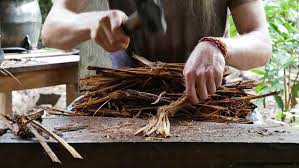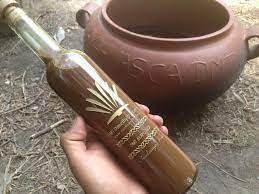Uncategorized
Ayahuasca: Legal Status, Composition, and Duration of Effects
Introduction
Ayahuasca, a potent psychoactive brew traditionally used in spiritual ceremonies by indigenous Amazonian tribes, has garnered significant global interest for its potential therapeutic and transformative effects. As its popularity rises, questions about its legality, composition, and the duration of its effects have become more prevalent. This blog post delves into these aspects, providing a comprehensive guide to understanding Ayahuasca in its cultural, legal, and experiential contexts.
What is Ayahuasca?
Ayahuasca, often referred to as “the vine of the soul,” is a traditional entheogenic brew made from two primary ingredients: the Banisteriopsis caapi vine and the Psychotria viridis shrub. These plants are native to the Amazon rainforest and have been used for centuries by indigenous tribes for spiritual, religious, and medicinal purposes.
- Banisteriopsis Caapi: This vine contains harmala alkaloids such as harmine, harmaline, and tetrahydroharmine. These compounds act as monoamine oxidase inhibitors (MAOIs), which are crucial in preventing the breakdown of the psychoactive compound DMT found in the Psychotria viridis leaves.
- Psychotria Viridis: This shrub contains high levels of DMT (dimethyltryptamine), a powerful psychedelic compound. DMT on its own is rapidly metabolized by the body’s MAO enzymes and is not orally active. However, when combined with the MAOIs from Banisteriopsis caapi, DMT becomes orally active, leading to the profound psychoactive effects associated with Ayahuasca.

Is Ayahuasca Legal?
The legal status of Ayahuasca varies significantly across different countries and regions. Its legality is often influenced by the presence of DMT, a Schedule I controlled substance under international law, and the cultural and religious contexts in which Ayahuasca is used.
- South America: In countries like Peru, Brazil, and Colombia, Ayahuasca is legal and culturally significant. These countries recognize its traditional and religious use, and ceremonies are often conducted legally under the guidance of shamans. In Peru, for example, Ayahuasca is legally protected as part of the national cultural heritage.
- North America: In the United States, the legal status of Ayahuasca is complex. While DMT is classified as a Schedule I substance, certain religious groups, such as the União do Vegetal (UDV) and the Santo Daime Church, have received legal exemptions to use Ayahuasca in their ceremonies. These exemptions were granted following court rulings recognizing Ayahuasca’s religious significance and the right to religious freedom.
- Europe: The legal status of Ayahuasca in Europe varies by country. In Spain and Portugal, Ayahuasca ceremonies are relatively common, and its use is generally tolerated. However, in other countries like France and the United Kingdom, Ayahuasca is illegal due to its DMT content.
- Other Regions: In Australia and New Zealand, Ayahuasca is illegal due to the presence of DMT. In Canada, Ayahuasca’s legal status is ambiguous; while DMT is controlled, there have been instances of legal exemptions for religious use.
It’s essential for individuals interested in participating in Ayahuasca ceremonies to thoroughly research the legal status in their respective countries and regions to avoid legal repercussions.
What is Ayahuasca Made Of?
The preparation of Ayahuasca is a meticulous process that involves combining the Banisteriopsis caapi vine and the Psychotria viridis leaves. Here is a detailed overview of the components and the preparation process:
- Banisteriopsis Caapi: The vine is typically harvested, cleaned, and pounded to increase its surface area. It is then boiled in water for several hours, sometimes in multiple stages, to extract the MAOIs. The resulting liquid is often reduced to concentrate the active compounds.
- Psychotria Viridis: The leaves of the Psychotria viridis shrub are picked and added to the boiling mixture. These leaves contain the psychoactive compound DMT, which becomes orally active when combined with the MAOIs from the vine.
- Additional Ingredients: Some traditional recipes include other plants and herbs believed to enhance the brew’s effects or add specific qualities. These additional ingredients vary by region and shamanic tradition.

The preparation of Ayahuasca is not merely a chemical process but also a spiritual one. Shamans often perform rituals and prayers during the preparation, infusing the brew with spiritual intentions and blessings.
How Long Does Ayahuasca Last?
The duration of Ayahuasca’s effects can vary depending on several factors, including the individual’s metabolism, the dosage, and the specific preparation of the brew. Generally, the effects of Ayahuasca can be broken down into three phases: onset, peak, and afterglow.
- Onset: The onset of Ayahuasca’s effects typically begins within 30 to 60 minutes after ingestion. Participants may start to feel mild changes in perception, body sensations, and emotional shifts.
- Peak: The peak effects usually occur between 2 to 4 hours after ingestion. During this phase, individuals may experience intense visual and auditory hallucinations, profound emotional and psychological insights, and a sense of connection to the spiritual or divine. This phase is often accompanied by physical sensations such as nausea, vomiting, and diarrhea, known as “purging,” which are considered part of the cleansing process.
- Afterglow: After the peak, the effects gradually diminish over the next 2 to 4 hours. Participants may feel a sense of clarity, emotional release, and peace. This afterglow phase can last for several hours to days, during which individuals may reflect on their experiences and integrate the insights gained during the ceremony.
Overall, the entire Ayahuasca experience can last between 4 to 8 hours. However, the psychological and emotional effects can extend beyond the immediate experience, influencing the individual’s life and perspective long after the ceremony.
The Therapeutic and Transformative Potential of Ayahuasca
Ayahuasca is often revered for its potential therapeutic and transformative effects. Many individuals seek Ayahuasca ceremonies for healing, personal growth, and spiritual exploration. Here are some of the potential benefits:
- Psychological Healing: Ayahuasca has shown promise in treating various psychological conditions, including depression, anxiety, PTSD, and addiction. The brew’s ability to induce deep introspection and emotional release can help individuals confront and heal from past traumas and unresolved issues.
- Spiritual Growth: Many participants describe Ayahuasca as a tool for spiritual awakening and connection. The experience can lead to a sense of unity with the universe, a deeper understanding of one’s purpose, and a connection to the divine. This spiritual aspect is a significant draw for those seeking to expand their consciousness and explore the nature of existence.
- Emotional Release: The intense emotional experiences during an Ayahuasca ceremony can facilitate the release of repressed emotions and pent-up feelings. This cathartic process can lead to a sense of emotional liberation and well-being.
- Personal Insights: Ayahuasca often provides profound personal insights and revelations. Participants may gain a new perspective on their lives, relationships, and personal challenges, leading to positive changes and personal growth.
Risks and Precautions
Despite its potential benefits, Ayahuasca is not without risks. It’s essential for individuals to approach Ayahuasca with caution and awareness, considering both the potential benefits and the risks involved:
- Psychological Risks: The intense nature of the Ayahuasca experience can be psychologically challenging. Some individuals may experience fear, anxiety, and distress during the ceremony. Those with a history of mental health issues, especially psychosis or schizophrenia, should avoid Ayahuasca, as it can exacerbate these conditions.
- Medical Risks: Ayahuasca can interact with certain medications and medical conditions. Individuals taking antidepressants, antipsychotics, or other psychoactive medications should avoid Ayahuasca due to potential dangerous interactions. Additionally, those with cardiovascular conditions or other serious health issues should consult with a healthcare professional before participating in a ceremony.
- Purging: The physical purging associated with Ayahuasca can be intense and unpleasant. Nausea, vomiting, and diarrhea are common and can be physically taxing. Participants should be prepared for this aspect of the experience.
- Legal Risks: As mentioned earlier, the legal status of Ayahuasca varies by country. Participating in Ayahuasca ceremonies in regions where it is illegal can lead to legal consequences. It’s crucial to research and understand the legal implications in your area.
- Choosing a Reputable Retreat: With the rise of Ayahuasca tourism, it’s essential to choose a reputable and ethical retreat center. Research the facilitators, their experience, and the safety protocols in place. Ensure that the retreat center operates legally and respects the cultural heritage of Ayahuasca.
Conclusion
Ayahuasca is a powerful and sacred brew that offers profound experiences and potential healing. Its rich history and cultural significance, coupled with its growing popularity, make it a fascinating subject of study and exploration. However, it’s crucial to approach Ayahuasca with respect, awareness, and caution, considering both its potential benefits and risks.

By understanding the legal status of Ayahuasca, the composition of the brew, and the duration of its effects, individuals can make informed decisions about participating in Ayahuasca ceremonies. Whether seeking healing, spiritual growth, or profound experiences, Ayahuasca offers a unique and powerful path for those who approach it with an open heart
